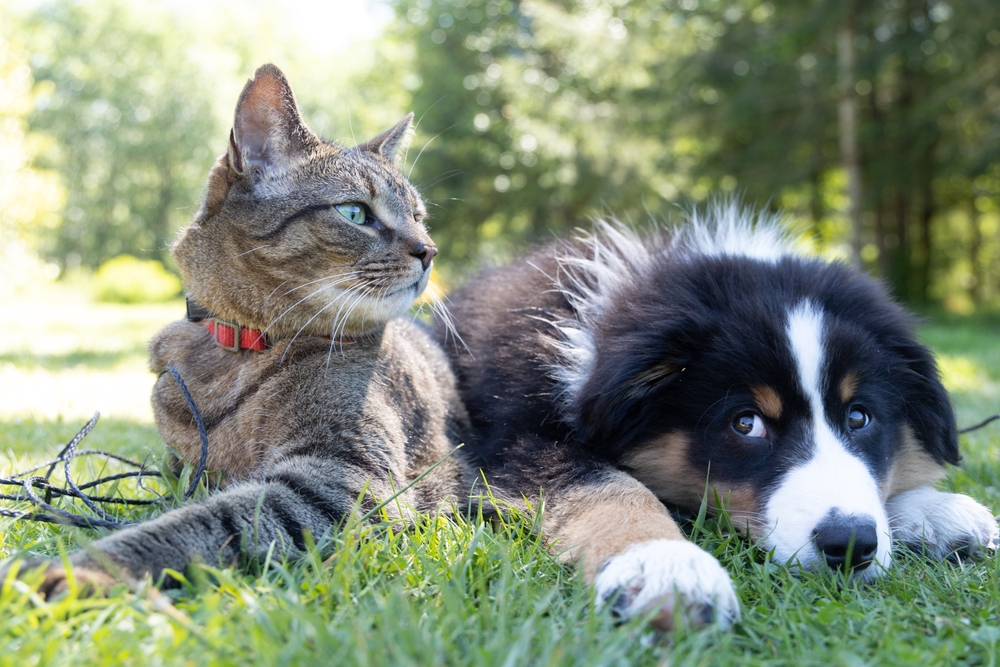The World Small Animal Veterinary Association (WSAVA) has published a comprehensive guidance document on reproductive control in cats and dogs, and it’s a must-have for all veterinarians caring for cats and dogs. The lengthy publication offers details about the various sterilization methods, including alternatives to traditional spay and neuter.
Led by Dr. Stefano Romagnoli, chair of the WSAVA Reproduction Control Committee, the authors synthesized hundreds of scientific publications on all aspects of canine and feline sterilization and contraception, health outcomes, and decision-making. The document was published in the Journal of Small Animal Practice.
The WSAVA guidelines for the control of reproduction in dogs and cats provide evidence-based scientific information on:
- achieving control of reproduction in dogs and cats with surgery (spay-neuter, vasectomy, ovary-sparing techniques) or without surgery (through the use of hormones, vaccines, locally sclerotizing agents);
- the benefits and the detriments of both approaches for the long-term health of dogs and cats; and
- the most cost-effective and ethical reproduction control strategies in shelter animal populations and non-owned dog and cat populations.
The authors included specific techniques and diagrams that can assist veterinarians in performing new procedures. The document also clearly describes the impacts on health, behavior, and longevity of gonadectomy (spay-neuter) and hormone-sparing sterilization (vasectomy, hysterectomy, or ovary-sparing spay). These details are crucial to providing appropriate counseling to pet owners on the best method of reproduction control for their specific pet. This individualized approach to reproductive control is recommended by most veterinary organizations.
Those working with free-roaming cats and dogs or shelter animals will also find the detailed treatment of the data helpful in forming plans to address pet overpopulation. Topics include early spaying and neutering, mandatory spay-neuter laws, and specific recommendations for reproductive control of non-client-owned (shelter or feral) dogs and cats. For example, ovariectomy is recommended for most shelter and feral female cats, while neuter is recommended for male shelter cats and neuter or hormone-sparing methods are recommended for feral male cats.

Pet owners will also be interested in learning more about reproductive control in cats and dogs, as it has such wide-ranging implications for their pet’s health. The review of risks and benefits of different sterilization methods as well as age at sterilization is insightful. Importantly, the authors provide summary recommendations for male and female dogs and cats with “responsible” pet owners, or those who provide regular veterinary visits to ensure preventive healthcare (e.g. vaccinations, contraceptive measures, parasite control). For example, the summary recommendation for female dogs is to leave them intact in most cases, whereas for males several options (intact, hormone-sparing sterilization, and non-surgical sterilization) may be used depending on the individual. The authors note that “these recommendations may change according to individual circumstances and the final decision if and how an animal’s reproductive status is altered needs to be made by the client in consultation with a veterinarian.”
With all the summary recommendations, it’s helpful to read the associated text, which describes important considerations and exceptions.
The Parsemus Foundation, a long-time advocate of alternatives to surgical spay-neuter, congratulates the WSAVA Reproduction Control Committee for this impressive and thorough review of our knowledge on this broad topic. This evidence-based document will be a key part of every veterinarian’s toolkit in providing the best care for dogs and cats.



